🧬 AP Biology Unit 5 (copy) (copy)
8-11% AP Weighting
Topics
5.1 Meiosis
5.2 Meiosis and Genetic Diversity
5.3 Mendelian Genetics
5.4 Non-Mendelian Genetics
5.5 Environmental Effects on Phenotype
5.6 Chromosomal Inheritance
5.6 - Introduction to Chromosomes and Reproduction
Humans have 23 homologous/homolog (same) chromosome pairs, meaning 46 total chromosomes.
A decent chunk of 5.6 is more or less vocabulary:
Somatic cells - A normal “body” cell that (in humans)
Gametic Cells - Egg or sperm in humans, cells with half the chromosomes of normal cells that are used for reproduction.
Haploid Cell (Gametophyte) - a cell with half the normal amount of chromosomes, they have a single of each type of chromosomes instead of homologous pairs
Diploid Cell (Sporophyte) - A cell with 2 chromosomes per type of chromosomes, they have homologous pairs.
n - a notation for the number of chromosomes in a cell. A haploid (gamete) cell has n chromosomes while a diploid (somatic) cell has 2n chromosomes.
Syngamy - The fusion of two gametes for fertilization
Zygote - a fertilized egg, diploid.
Allele - the name for the variations of genes. For example, a flower can have an allele for blue petals or an allele for white flowers.
Loci/Locus - the position where a gene/allele is found on a chromosome.
Sex Chromosomes - the Chromosomes that determine the gender of the cell. In humans, there are XY or XX (with the exception of mutations causing intersex, like XXY, XXXY, etc)
Monosomy - The term for when a mistake occurred in meiosis, called a nondisjunction, causing a cell to only have 1 chromosome and not a chromosomal pair. Most of these are not viable, however, a monosomy of Sex Chromosomes causing there to only be a X chromosome is generally a viable female. This is because in females, one X chromosome is “crumpled up” and deactivated into a Barr Body, as there is no need for two X chromosomes.
Tetrad - A pair of homologous chromosomes
Humans remain as diploids their whole life after fertilization, the only human cells that are haploid are the gametes. However, some types of fungi and protists spent the majority of their life as haploids. Some plants, mostly algae, have a life cycle of Alternation of Generation in which they flip between haploid and diploid throughout various stages of their life.
5.1-5.2 - Meiosis
Click Here for a video on Meiosis
Meiosis is the process of reduction division, it creates 4 daughter gametes that are genetically different from the parent cell. Meiosis occurs in 2 steps, Meiosis 1 and Meiosis 2. Daughter cells have half the genetic material of the parent cell. Meiosis begins by duplicating the DNA but divides twice.
Meiosis 1
Chromosomes begin, before Meiosis, as one / in the X, but they are still called chromosomes. During the S phase of the cell cycle, these chromosomes duplicate, so they are now an X, still one chromosome, but with two identical sister chromatids
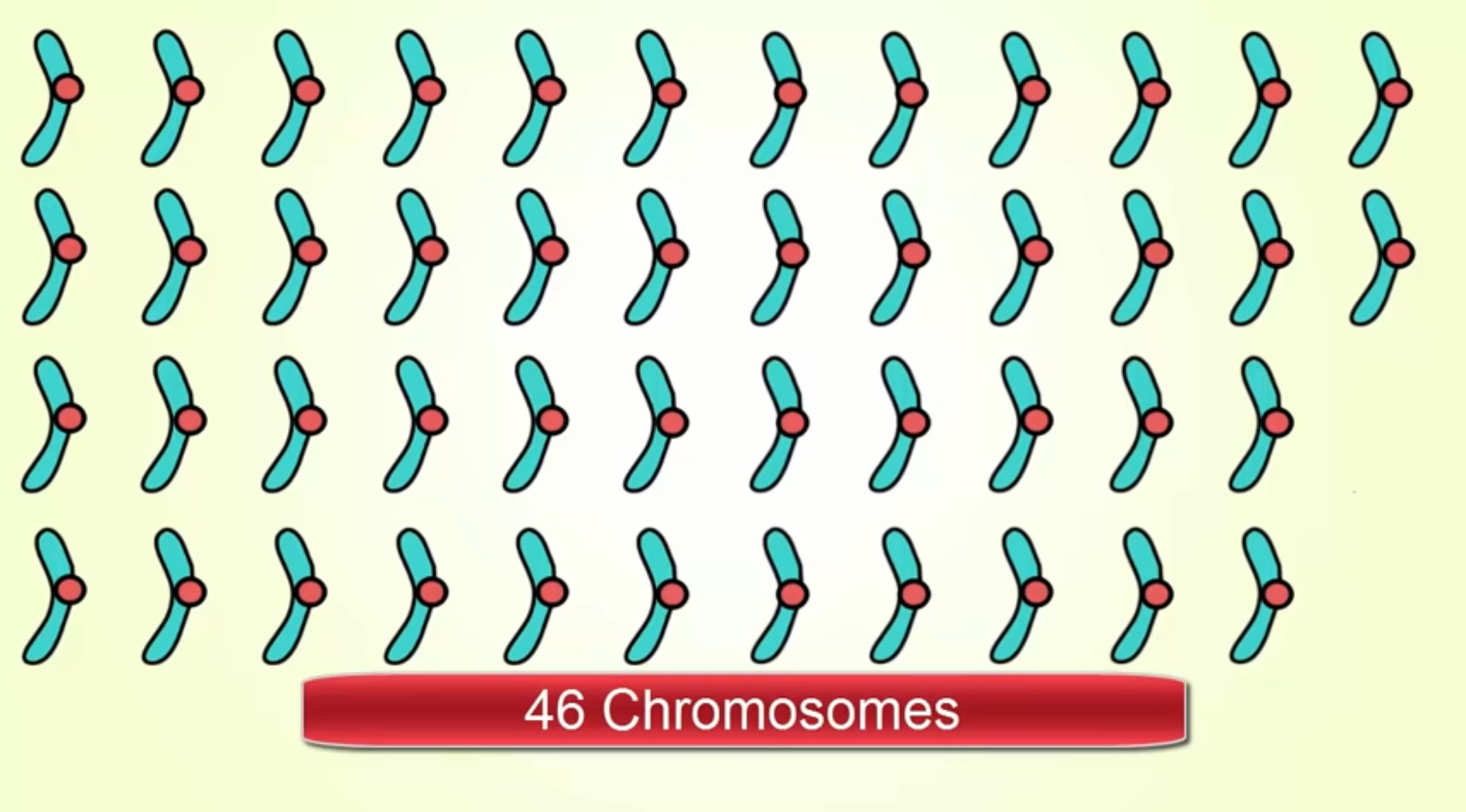
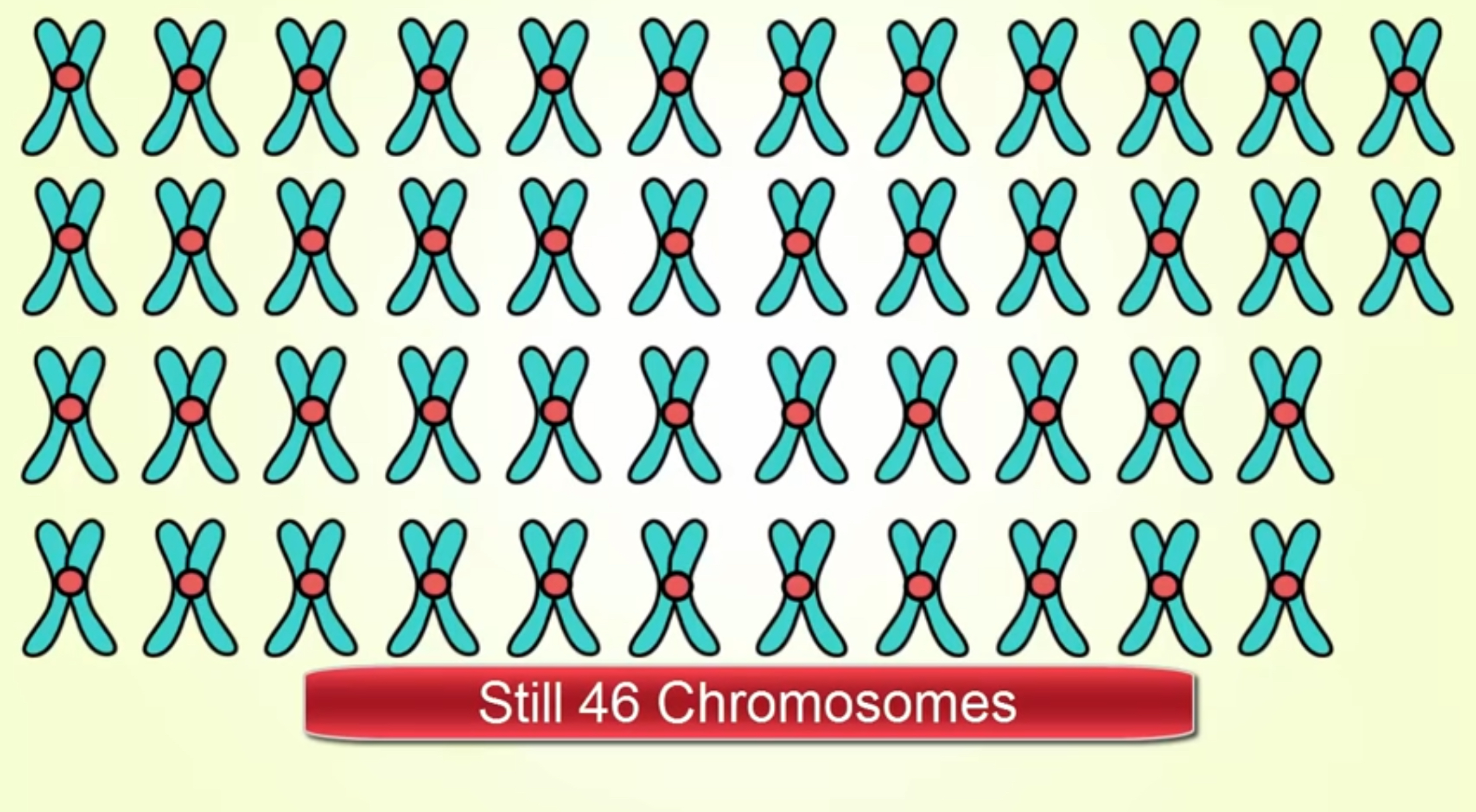
Both chromatids are genetically identical, but their homologous pair, while having the same genes, may have different alleles. Crossing over occurs between the homologous chromosomes, aka between a tetrad, not between sister chromatids. Still confused? Here is a video explaining the chromosome/chromatid difference.
Prophase 1
Homologous chromosomes, through synapsis, are attracted to the other pair of that type of chromosome. These tetrads complete crossing over, beginning with the chromosomes drape themselves over each other at their chiasmas. The alleles switch over to the other chromosome, making them genetically different from each other. (The DNA from the mother and father, which were previously separate chromosomes, get mixed together.)
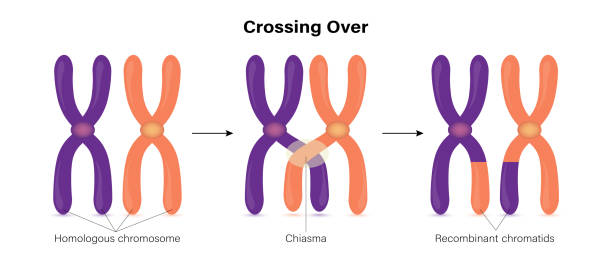
Metaphase 1
The chromosomes line up in the center in random order, called independent assortment. This randomness causes there to be a different combination of the chromosomes in the gametes. In the photo below, their gametes can have different combinations of the chromosomes, which are genetically different from each other.
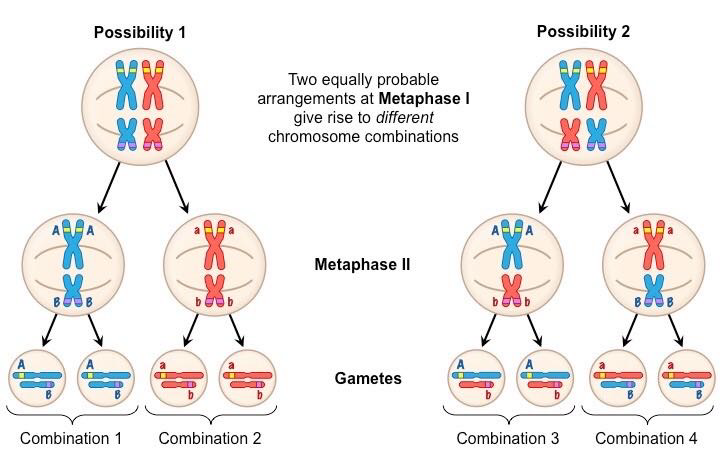
The processes of crossing over and Independent Assortment causes genetic diversity in the gametes.
Anaphase 1
The homologous chromosomes separate
Telophase 1
The cells begin to pull apart, there will be 2 diploid daughter cells.
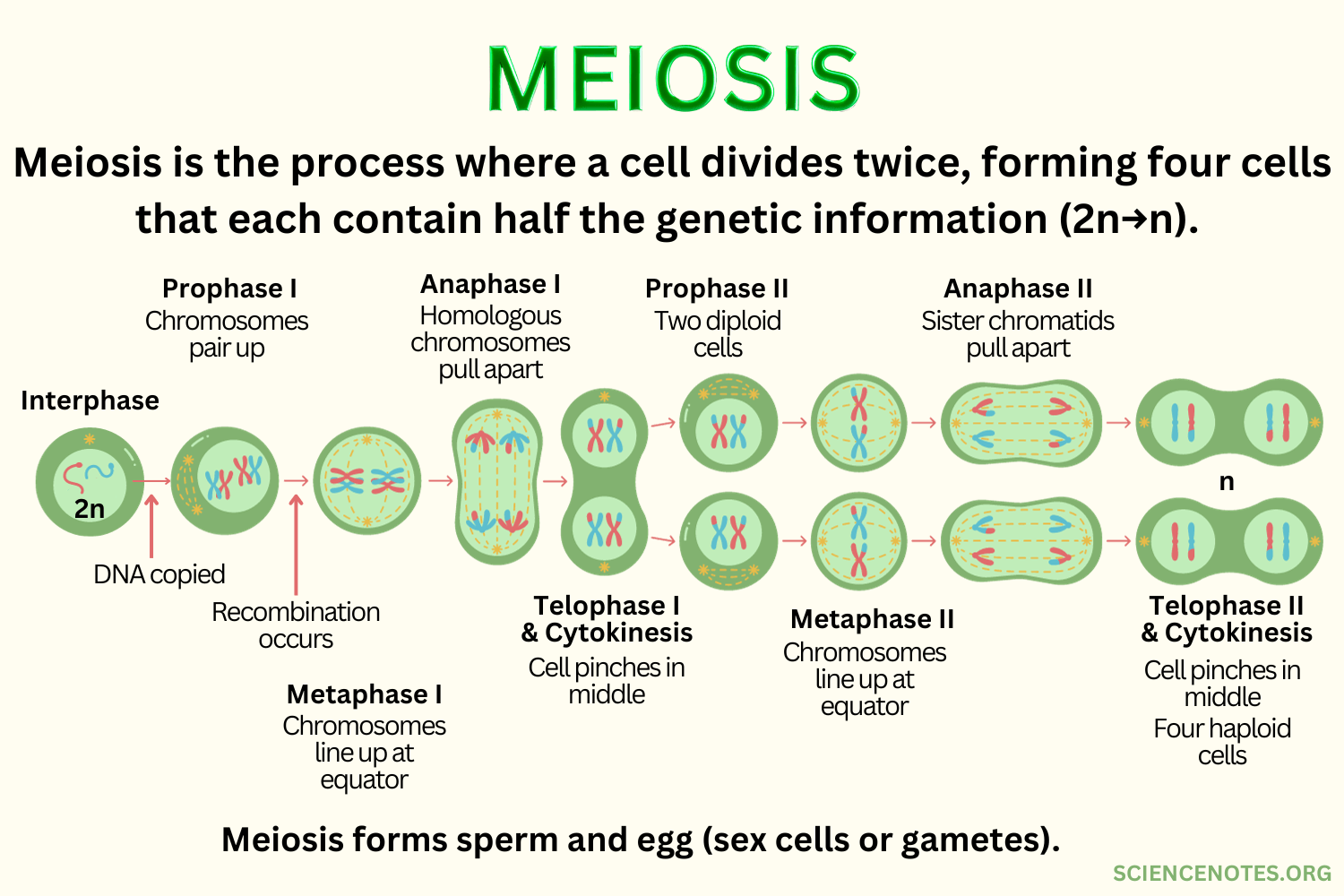
Meiosis II
Prophase II
Spindle fibers form to separate sister chromatids
Metaphase II
Chromosomes line up in the center
Anaphase II
The sister chromatids are pulled apart. Once separated, they are called chromosomes.
Telophase II
The cells begin to split apart, there are now 4 haploid daughter cells, as the 2 daughter cells from Meiosis 1 split into two daughter cells each.
5.3 - Mendelian Genetics
Click Here for videos on Mendelian and Non-Mendelian genetics
Mendelian genetics follow the simple rules of dominant vs recessive.
Dominant
One allele is enough for a certain phenotype to be expressed, the other allele is repressed.
Recessive
Two alleles are required for a certain phenotype to be expressed.
RR or rr - Homozygous; Rr - Heterozygous
Phenotype
The physical expression of the genes
ex: Red petals
Genotypes
The specific alleles
ex: RR
True breeding is the crossing of two homozygous organisms, resulting in offspring of the same phenotype/genotype. (RR x RR or rr x rr)
A Monohybrid Cross is the cross of two heterozygous organisms. (Rr x Rr) These have a 1:2:1 genotype ratio for rr:Rr:RR and a 3:1 phenotypic ratio.
A Dihybrid Cross is a cross of two organisms that are heterozygous for two different alleles. (RrMm x RrMm) These have a 9:3:3:1 phenotypic ratio.
Mendel came up with the Law of Unit Factors, which states there are 2 factors that determine characteristics. These factors are the alleles, but there was not a name at that point. He also created the Law of Segregation, which explains that the parent cells segregate out their alleles and only pass one on to their offspring.
In experiments, Wild Type is the name for the allele commonly found in the wild. It is the non-mutant allele.
Pedigrees
A pedigree is basically a way to do a family tree for genetics. Colored shapes have the trait. Half-colored shapes are carriers. A branch at the children like a triangle means twins, if there’s a line between the triangles they’re identical. A dashed line means adoption/stepsiblings. A diamond with a p means the couple is pregnant, but don’t know the gender of the child. Double lines mean inbreeding.
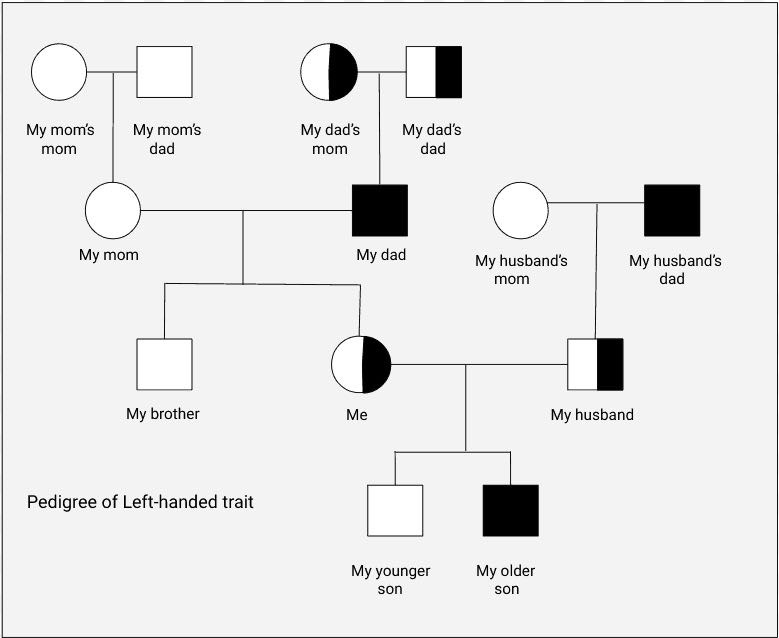
5.4 - Non-Mendelian Genetics
Click Here for videos on Mendelian and Non-Mendelian genetics
Non-Mendelian Genetics are more complicated than simple dominant/recessive, they can be influenced by multiple factors or genes.
Incomplete Dominance: The two phenotypes encoded by the alleles are “blended together,” both are partially expressed. For example, a flower has one red allele and one white allele, so the flower is pink.
Codominance: Both phenotypes encoded by the alleles are expressed in different areas, like spots/patches. For example, a flower has one red allele and one white allele, so the flower has mottled white and red petals. Another example of this is blood types, those with AB blood have both A and B proteins in the blood. O is the absence of A or B.
Pleiotropy: While an allele only controls one phenotype, that phenotype causes effects on other phenotypes. For example, the allele for sickle cell anemia only controls the shape of red blood cells, but sickle cell anemia can cause kidney failure.
Epistasis: One allele alters the phenotypic expression of a completely separate allele. For example, in labradors, there are genes that control fur color, either brown or black. However, there is an allele that partially inhibits pigment production in the fur, causing blonde labradors. Note, this is different from abilities.
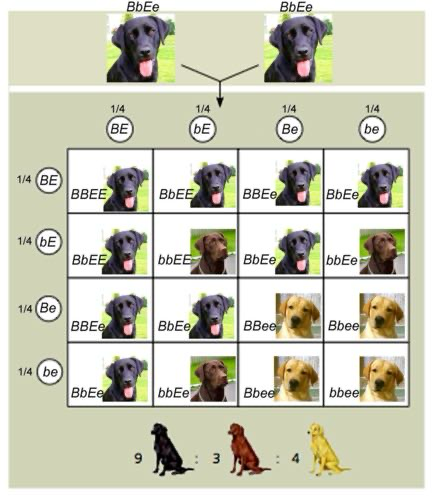
Polygenic inheritance: Multiple alleles control a single phenotype. For example, height, eye color, and skin color all follow this pattern.
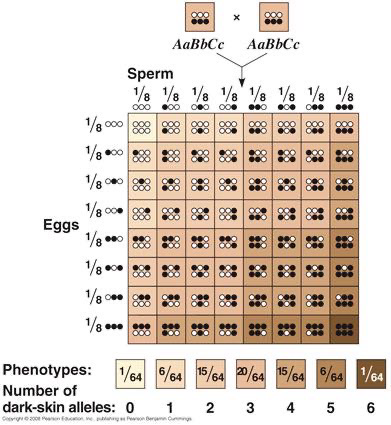
Mitochondrial Inheritance: Mitochondrial inheritance is when traits pass through the maternal lineage via mitochondria. Each gamete receives some mitochondria from the mother. However, if 1 out of every 20 mitochondrial has a mutation causing a mitochondria disease, the mother may asymptotic. Yet, if the child happens to receive more of the mutated mitochondria, they have have 1 in 5 mitochondria diseased and have severe symptoms.
Sex-Linked Trait Inheritance: Sex-linked trait inheritance involves genetic traits on sex chromosomes, the X and Y chromosomes. These traits show different inheritance patterns between males and females due to the genetic makeup of sex chromosomes. X-linked traits are more common in males because they have one X chromosome, while females have two, providing a backup if one trait is harmfully mutated.
5.5 - Environmental Effects on Phenotypes
Click Here for videos on Epigenetics
The environment can cause changes in phenotypes. For example, human skin gets darker when exposed to light over a long period of time, and arctic foxes have a lighter fur color in the winter when there is snow compared to summer. This phenomenon is called phenotypic plasticity. Some forms of phenotypic plasticity are controlled by the regulation of genes, called epigenetics, when some genes are not expressed until exposed to a certain stimulus. This can cause organisms with the same genotype to have different phenotypes because they live in different environments.
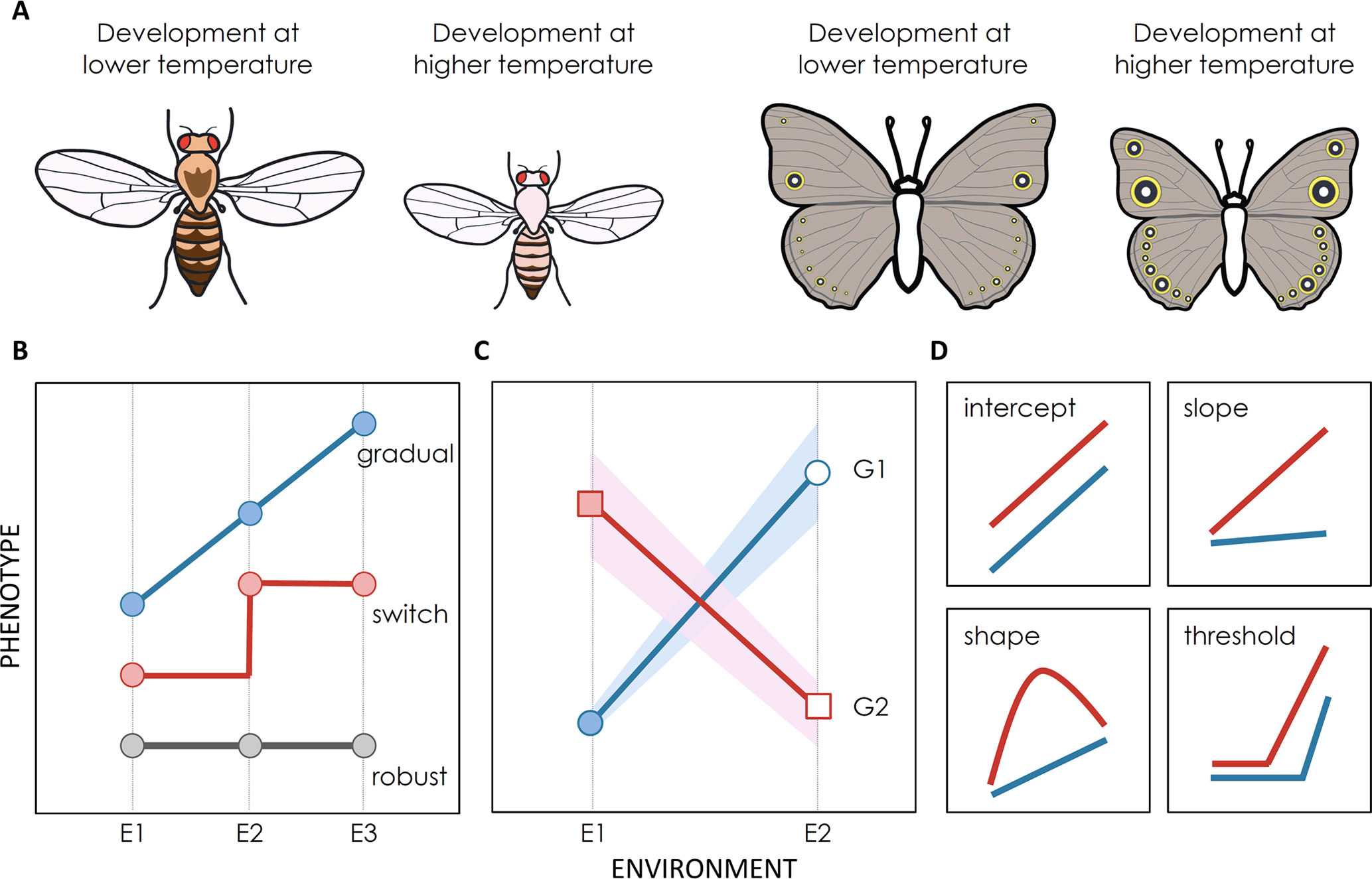
Step-by-Step Process for Probability Calculations:
Identify the Genetic Cross: Determine the genotypes of the parents involved in the cross. For example, consider a monohybrid cross between two heterozygous plants (Rr x Rr, where R = dominant allele for red petals, r = recessive allele for white petals).
Set Up a Punnett Square: Draw a Punnett square to visualize the possible offspring genotypes. For Rr x Rr:
R
r
R
RR
Rr
r
Rr
rr
Determine the Genotypic Ratios: Count the different genotypes produced from the Punnett square. In this case:
1 RR
2 Rr
1 rrThus, the genotypic ratio is 1:2:1.
Determine the Phenotypic Ratios: Identify the phenotypes associated with those genotypes. For the above, RR and Rr will produce red petals, while rr will produce white petals.
Red petals: 3 (1 RR + 2 Rr)
White petals: 1 (1 rr) Thus, the phenotypic ratio is 3:1.
Calculate Probabilities: To find the probability of a specific outcome, use the ratios. For red petals:
Probability of red petals = (Number of red phenotypes) / (Total phenotypes) = 3/4 = 0.75 or 75%
Probability of white petals = (1/4 = 0.25 or 25%)
Consider Additional Factors: If multiple traits are involved (a dihybrid cross, for example), repeat the process for each trait and consider the combined probabilities, usually multiplying the probabilities of individual traits when they assort independently.
Multiplication Rule:
The multiplication rule states that the probability of two independent events occurring together (A and B) is the product of their individual probabilities. This is particularly useful in genetics when calculating the likelihood of multiple traits appearing together.
For example, if you want to find the probability of obtaining a plant with red petals (R) from the Rr x Rr cross and tall stature (T) from a Tt x Tt cross:
Probability of red petals (R) = 3/4
Probability of tall stature (T) = 3/4
Probability of red petals and tall stature = (3/4) * (3/4) = 9/16.
Example of Dihybrid Cross:
In a cross between two parents heterozygous for two traits (RrYy x RrYy), the phenotypic ratio typically is 9:3:3:1.
Generate a 4x4 Punnett square for both traits (R, r, Y, and y) to determine the outcomes.
Count the phenotype combinations for each trait and compute the probabilities accordingly.
Probability of getting a specific phenotype (e.g., R_Y_) would be the number of combinations for that phenotype divided by total combinations possible.
Conclusion:
Understanding these steps with examples will greatly enhance your grasp of genetic probabilities. Whenever two genes or traits are involved, consider using a Punnett square, keeping track of ratios and applying the multiplication rule to calculate probabilities effectively.
Heterozygous vs. Other Genotypes
Heterozygous (Rr): An organism has two different alleles for a gene, one dominant and one recessive. This results in the dominant phenotype being expressed.
Homozygous Dominant (RR): An organism has two identical dominant alleles. This also results in the dominant phenotype being expressed.
Homozygous Recessive (rr): An organism has two identical recessive alleles, resulting in the recessive phenotype being expressed.
Summary of Key Points:
Phenotype: The physical expression of the genes; for example, red petals (dominant) vs. white petals (recessive).
Genotype: The specific alleles; RR, Rr, and rr represent the different combinations.